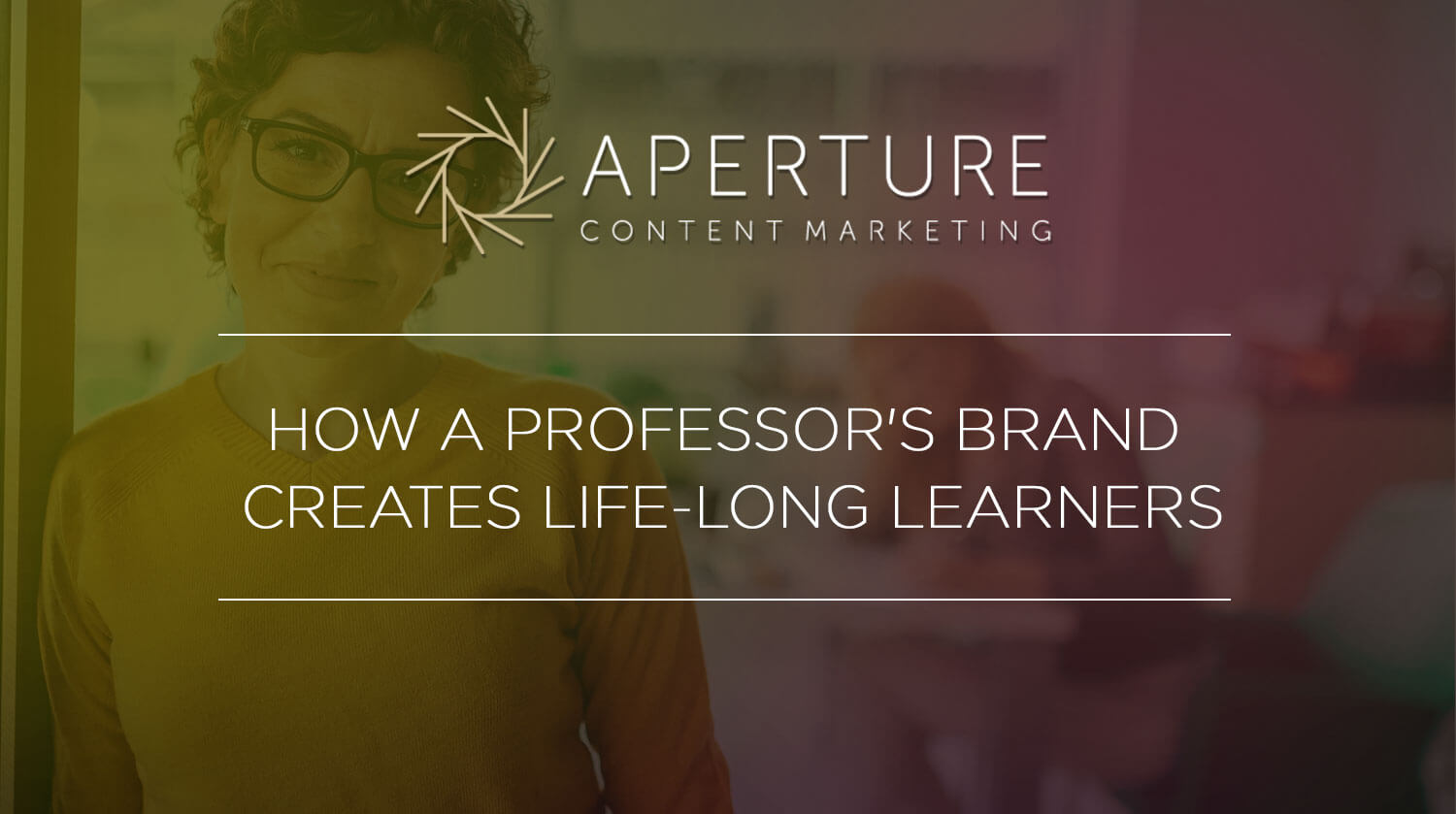Professors are impacting student experience and persistence
Professors interact with students more than any other campus employee. In some ways, they are the public face of your institution. Good professors are teachers, friends, advocates, and have a real impact on student retention and persistence.
Some of your schools’ brand equity resides in your professors’ public image and appeal to students. Thinking of these teaching relationships in terms of brand equity may seem antithetical to the educational paradigm, but it’s just another way to describe how students develop an ongoing relationship with your college.
Although staff, administrators, and their peers all help students feel like they belong on campus, professors are particularly important. Faculty have a direct impact on how supported students feel in the learning environment. A great professor’s brand creates loyal alumni and lifelong learners.
Professors are their own brand
It may seem strange to think of professors as having a brand in the same way we think of celebrities having a brand, like Taylor Swift. However, Ravi K. Jillapalli, assistant professor of Marketing at Texas State University, argues that professors do have a kind of customer-based brand equity. This is an important component of students’ loyalty to your college’s brand as whole.
Students have strong, favorable, and unique associations with each professor. Sometimes these associations are strong enough that they engage in consumer advocacy and show commitment by recommending classes to peers and returning for more themselves. Their behavior mirrors consumer behavior towards other people with brand equity.
Students judge schools by the quality of the professors
Perhaps this is because professors are so important. Students judge their success at school by their success in the classroom. Professors provide the most feedback some students will ever receive, especially absent a strong advising system. Interactions with the faculty also make up the bulk of everyday encounters a student has with an employee of the university.
Of course, the administrative structure also provides an important backdrop to the student experience. However, if a student feels alienated or overwhelmed in classes, that dominates their experience of the school. In general, professors tell students if they are succeeding at school – or not.
Faculty attitudes and actions affect the institutional culture
Professors also have a disproportionate impact on institutional culture. As Alan Siedman notes in his book, College Student Retention: Formula for Student Success, faculty control the classroom environment. This has an outsized impact on commuter students, who make up the vast majority of community college students.
For nonresidential and commuter students, the classroom may be the only place they build relationships with their peers and faculty. Student participation in the campus community often equals success. As Siedman points out, nobody is better placed to facilitate this than professors.
Supportive faculty interactions make students feel welcome
Pedagogically excellent professors are warm, knowledgeable, charismatic, and use high-impact teaching practices. Students in their classrooms feel welcomed and challenged. Often, it’s a professor who reassures them that they belong at the school and have what it takes to succeed.
Minority faculty can serve as important role models and mentors for minority students by simply doing their jobs (Turner and Myers, 2000). Just by being present in the classroom they can show other first-generation, immigrant, and minority students they belong in academia.
Professors are the first line of defense in student retention
The grades students get impact things like their eligibility for need-based funding or whether they can graduate in two years. Professors are often the first to notice if a student is struggling. That means they are the first to realize if a student is at-risk.
Earlier interventions are better for at-risk students. Creating simple reporting systems, which allow professors to alert advisors and students that they need additional help, makes a big difference. Professors may have to deliver bad news, but they also play an important role in keeping at-risk students in class.
Great professors create loyal alumni
Students often develop relationships with professors that last for years. These relationships are a powerful tie connecting them to the college. The idea of other students learning from those same professors creates a sense of continuity.
The great experience students have in a professor’s class stays with them for life. It can change someone’s career path, introduce them to a new passion, or help them make important connections after graduation. Most importantly, it can make them enthusiastic and confident life-long learners.
Academic marketers should embrace professorial brands
Administrators in admissions and strategic enrollment management should harness the power of great professors in recruitment and retention efforts. Prospective students should spend time visiting the classrooms of faculty your school has identified as particularly effective educators. The school can also publicize particularly exciting classes to prospective students.
One way to do this is by creating a series of short videos for your school website in which students and professors describe their experiences in class, covering course materials, related internships, or research. High-quality, short video content is particularly appealing to Gen Z.
Your school can also feature particularly popular professors in your publications. An interview or feature can be a great way to celebrate a professor’s achievements and it is often interesting to current and former students. It’s particularly good to create content that can be shared easily on social media sites.
Professors are one of your institution’s greatest assets. Invest in them, publicize their achievements, and facilitate relationships between professors and students. It’s good for your enrollment and your educational mission.
References
Jillapalli Ravi K. and Regina Jillapali. 2014. “Do Professors Have Customer-Based Brand Equity?” Journal of Marketing for Higher Education. 24(1), p. 22-40
Alan Seidman. 2005. College Student Retention: Formula for Student Success. Westport, CT: Praeger Publishers
Turner, Caroline S.V. and Samuel L. Myers, Jr. 2000. Faculty of Color in Academe: Bittersweet Success. Needham Heights, MA: Allyn and Bacon.


